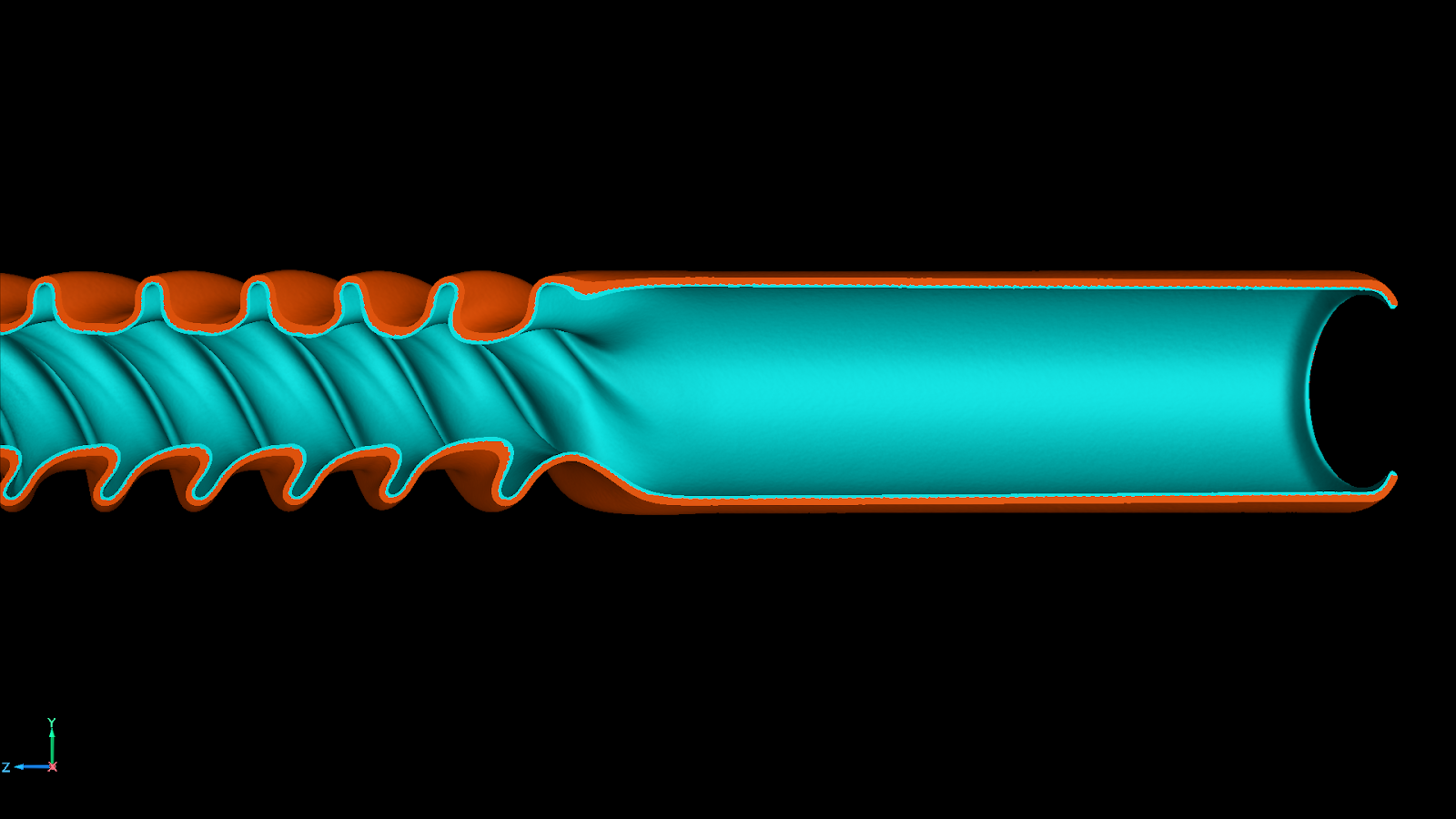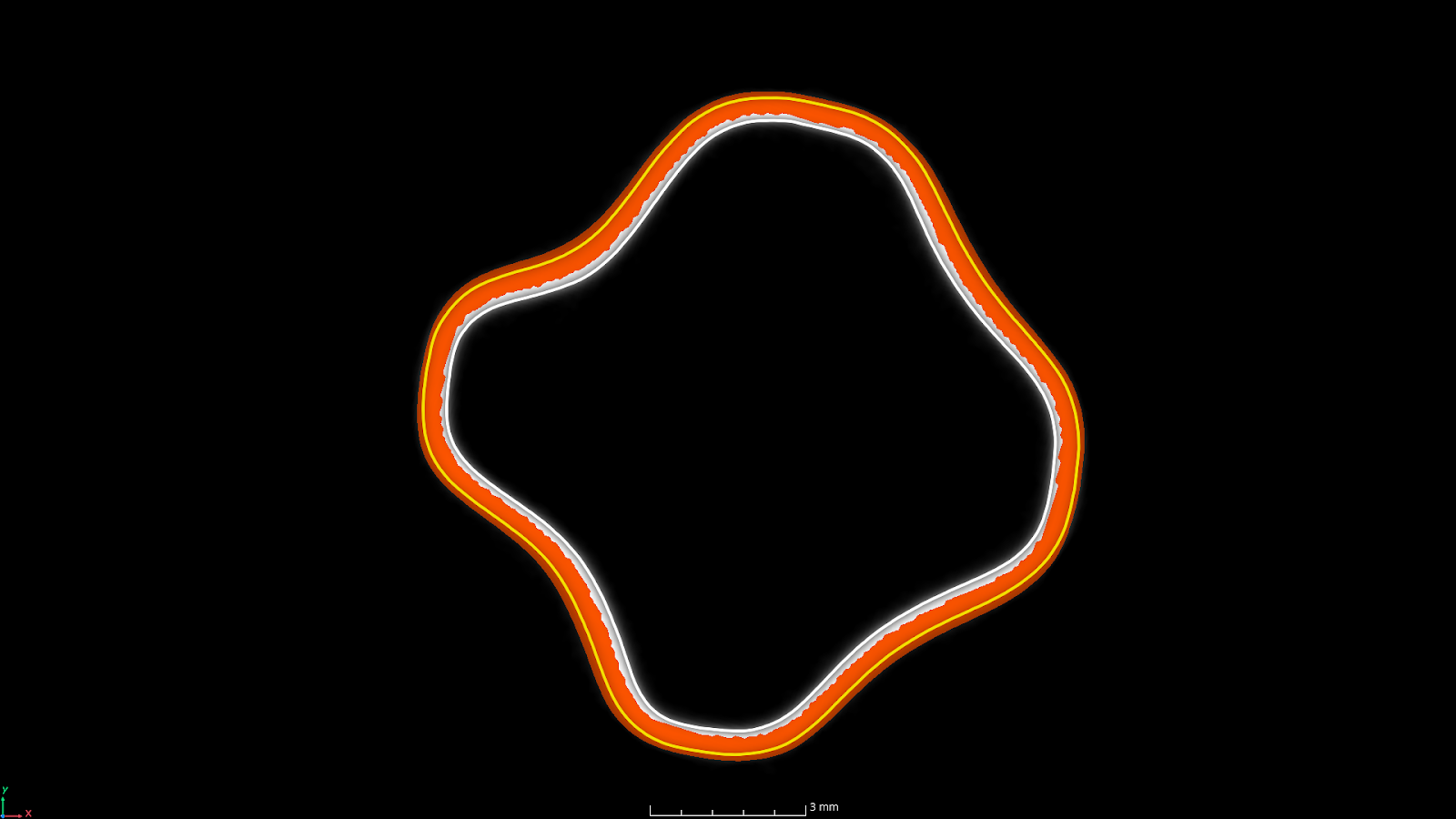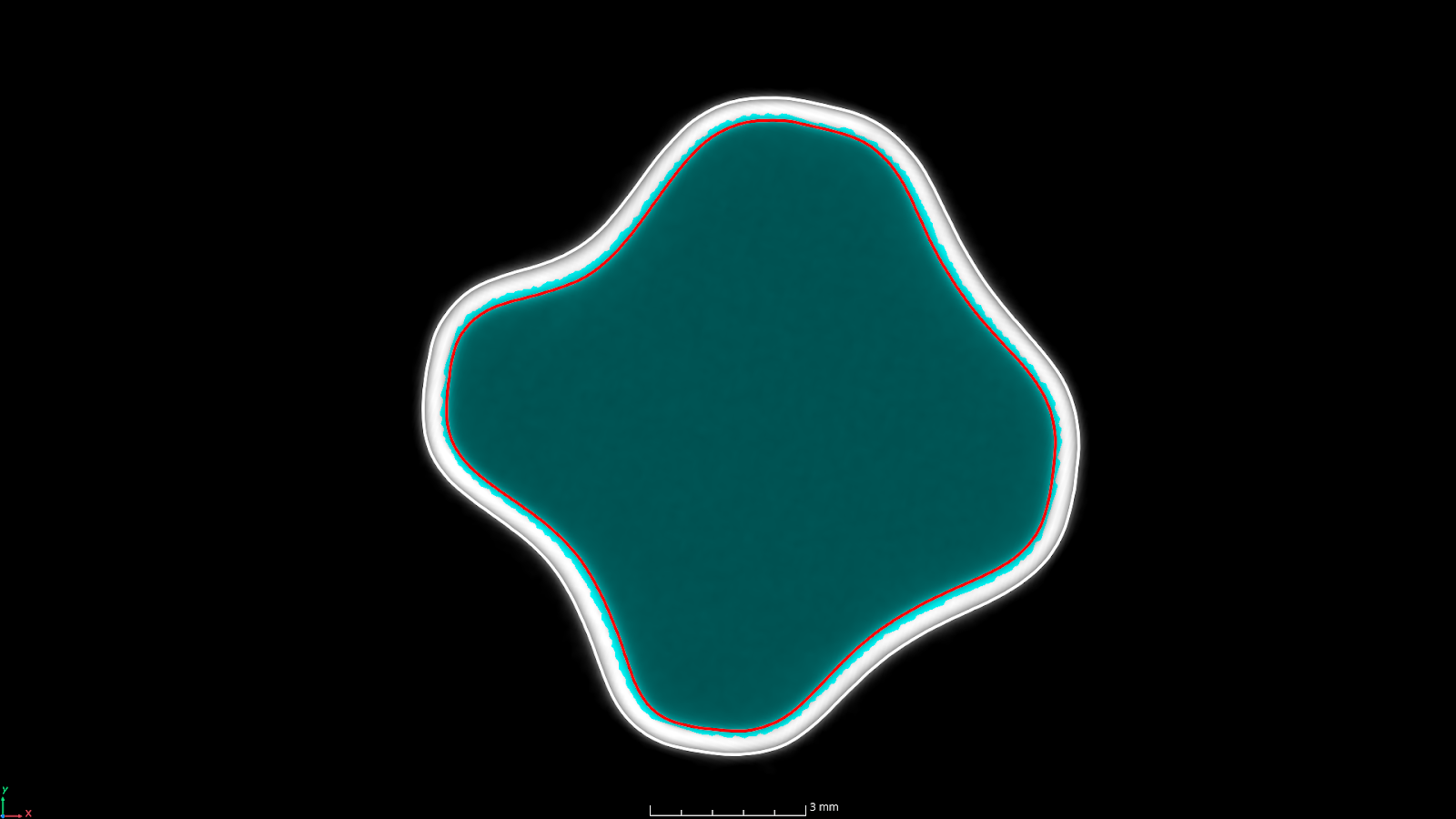
WEBINAR: Unlock the Power of Industrial CT Scanning
See Deeper. Solve Faster. Spend Smarter.
A 1/2 Hour That Could Reshape Your Inspection Strategy
Date: Wed June 18, 2025
Time: 11am Central Time
Location: Live Online Webinar

See Deeper. Solve Faster. Spend Smarter.
A 1/2 Hour That Could Reshape Your Inspection Strategy
Date: Wed June 18, 2025
Time: 11am Central Time
Location: Live Online Webinar
See how industrial CT scanning provided surface area calculations for a complex aluminum medical device. A case study from Nel PreTech.

A global market leader in medical device research & development and manufacturing. They focus on a range of IV and critical care specialties and products, including infusion therapy, airway and temperature management, and other related services.
The sample was a coated, aluminum metal tubing with a unique spiral shape used for heat exchange. The customer required surface area calculations for both the interior and exterior walls of the tubing.
Industrial computed tomography (CT) scanning for medical devices combined with VGL interrogation software to run calculations on specific parameters of the complex shape.
Surface area data was used to validate or adjust the manufacturing process.
Material types can affect computed tomography results. We often discuss the density of materials and the choice of scanning resolution for the ideal outcome in non-destructive testing for medical devices. Material density affects X-ray attenuation, resulting in increased or decreased contrast. The density of aluminum is 2.7 g/cm³, making it more penetrable than denser counterparts, like steel at a density of around 8 g/cm³. The aluminum medical tubing specimen was CT scanned at a resolution of 87μm, a typical resolution setting for aluminum-based parts of this size.

Finding the surface area of flat sheet metal or basic shapes is a simple procedure that does not require advanced scanning methods. Now, imagine trying to find the internal and external surface area of a twisted piece of aluminum. When companies seek our expertise in industrial CT scanning and medical device manufacturing inspection, it is because we can scan their products with repeatable accuracy. We do not need to alter the device in any way, and they trust our accredited process. CT scanning, combined with the advanced algorithms of metrology software, is one of the only non-destructive technologies that can handle the calculations and imaging of internal and external surface area geometries.
In the first example below, you will see that the orange color is used to encapsulate the area of interest. The outer surface is designated with a yellow line. In the second image, the light blue color is used to encapsulate the inner area of interest. The red line indicates the interior surface. These colors are used as a tool to visualize areas of interest within the VGL software and are user-defined.


In this particular case, the medical device company was attempting to match what they expected to get nominally from the manufacturing process. Surface area nominals are typically simulated before production begins, making CT-based measurement essential for validating actual vs. expected geometry. Since they know the estimated amount of heat that’s supposed to dissipate based on surface area, they can use the CT scan data to be certain they’re hitting those numbers. If out of spec, they know to adjust the manufacturing process before mass production begins.
Industrial CT scanning was applied in this case study to validate heat exchange performance and manufacturing. CT scanning can also be used to compare different supplier products for quality assurance or to determine which supplier has the most appropriate product for the intended use.
Medical devices must meet specific requirements set forth by the FDA. Oftentimes, these regulations are put in place to monitor sterilization compliance. Surface area validation using CT scans can aid in calculating procedure compliance.
Trust Nel PreTech Corporation to deliver precise, non-destructive surface area measurements tailored for the demands of medical device manufacturing. Whether you're verifying your process, meeting FDA regulations, or ISO standards, our advanced CT scanning services provide the clarity and confidence your team needs.
👉 Request a free quote today or call (708) 429-4887 to speak with a metrology expert about your medical device inspection needs.

Antonio “AJ” Gradi is curious and eager to always learn new information. That dedication to knowledge has catapulted him from Applications Engineer/ CT Specialist to Director of CT at Nel Pretech Corporation. AJ joined the 3D scanning and industrial CT laboratory in July of 2022 and has excelled in every task given.

You'll find all the detailed service information you need in one brochure.
Download Brochure
Get a quote within 24-hours and keep your project on schedule.
Get a Quote
Our Nel PreTech engineers are ready to get started on your product challenges.
Ask an EngineerDownload the ultimate CT Scanning Buyer's Guide to improve understanding, time, and efficiency in your scanning needs. Over 50 Pages of useful data and case studies.
Download Now